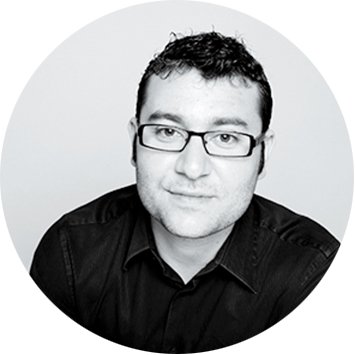You and Tony Fadell, one of the creators of the iPhone and iPod, started Nest after both of you left Apple. Wasn’t being in charge of iPod and iPhone software development your dream job?
I had a Mac Plus when I was three years old, and I loved Apple as a company. I flew out to California [from Gainesville, Florida] with my grandparents on my 13th birthday to go out to Cupertino. And I told my grandparents then, “Yeah, I’m going to work at Apple, for sure.”
Then why leave at just 26 years old?
Basically, I pushed as hard as I could, worked incredibly hard, built tons of stuff, built teams, built products, and loved it. But somewhere around my four-and-a-half-year anniversary at Apple, we were working on another generation of iPods and another generation of iPhones and starting work on the third generation of iPads, and I was ready for something new.
Going from smartphones to smart thermostats isn’t an obvious jump.
Tony and I had lunch back in October of 2009. I told Tony, “I’m thinking about leaving Apple; I’m thinking about starting my own company, and I’m looking at smart-home stuff.” And he stops me right there. He goes, “You know what? A smart home is for geeks. No one wants a smart home—it’s a stupid idea. Focus on doing one thing and doing it really well.”
Programmable thermostats existed before the Nest, but they were awful.
The programming was tough. They were like the early ’80s VCRs, where you’d push a button 15 times to change it to Tuesday and change the temperature there. Part of it is that the product was designed to be sold to a contractor and not designed for a user.
In contrast, the Nest is a lot like the iPhone—it’s easy to figure out how to use.
The product that we built is basically a smartphone on the wall.
And there’s nothing I have to push 15 times. There aren’t even any buttons—you just turn the entire metallic case. That’s very Apple-like.
When we were building Nest, we were going to build it like any great product and design company. You’d have great industrial design, great hardware engineering, great software engineering, great services, great consumer marketing—all those things.
One way the Nest saves energy is by detecting when no one’s home. But there’s got to be much more you can do on the back end, to make plans based on weather forecasts and other data.
There’s always more. Since we’ve launched the product, we’ve done something like 21 software updates, of which I’d say five or six have included major energy-saving algorithm improvements, and we’re always finding more. The more detail we have, the more users we work with, the more homes we’re in, the more we’re learning. It’s a very long tail of things we could be doing. You can see multiple products.
Which brings us back to your original ideas about a smart home. The Nest could become a hub for controlling many things, not just heating and cooling.
It could be, yes.
But yet you guys say only geeks want smart homes—
Wait, wait. I don’t believe in networking connectivity just for the sake of having things connected. There’s got to be a really good reason why you’d want to do it. You don’t want to put networking in your microwave oven. What would it do?
So what does make sense? What might a home in the future do differently?
Today when you arrive home, the Nest sensor sees you and starts cooling your home so you’re comfortable. And if you extrapolate to the future, you’re driving home from work; your phone knows that you’re driving home, or your car itself knows you’re driving home, and lets Nest know, “Matt will be home in 15 minutes; we’ll start preparing the home for his arrival.” And then, as you get closer to the door, things might change—it might turn the song list on and play my favorite music, or turn the lights on—or, when I leave, do the opposite.
That sounds like a geek dream to me—less about reducing energy than increasing comfort.
These things go hand in hand, actually. Part of the promise of Nest is that we’re going to keep your home comfortable, and may actually even make you more comfortable, while also helping you save.
—Brian Bergstein




